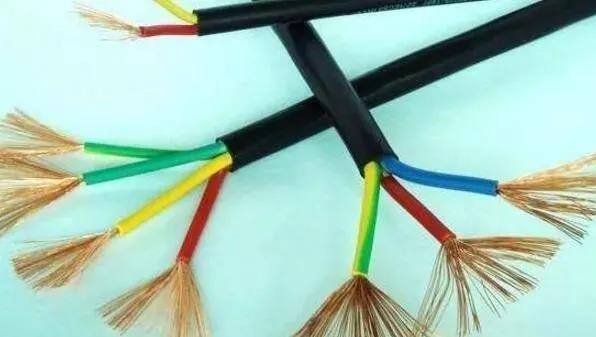For fire protection, maintenance and safety, it’s best to choose a wire specification for home improvement that has a certificate, a production license number, and a brand logo, and you must pay attention to its quality when purchasing overhead cables during home decoration. As long as there is nothing wrong with it, it is OK, otherwise the quality of the wires will not only affect our normal life, but there may also be huge safety hazards.
1. Appearance
Smooth and round, uniform color, insulating rubber and copper core are tight and not easy to peel off, inferior rubber looks thick, but when pressed hard, the squeezed part will become white, and it will be easy to age and fall off in the future, causing electric leakage.
2. Eccentricity
The thickness of the rubber ring is the same, that is, if the copper core is in the middle of the wire, the eccentricity is low.
3. Flame retardant
Use a lighter to burn the rubber. When the lighter leaves the wire, the wire should be automatically extinguished and a small amount of white smoke will be released. If the flame spreads and a large amount of white smoke is released, the rubber quality is not good.

4. Copper core
The high-purity copper core is anti-aging, high conductivity, and the fake color is yellow or white, and contains impurities. You can rub a piece of white paper on the copper core. If there are black substances on the white paper, it means that there are more impurities in the copper core. .
5. Logo
Whether there is a complete certificate of conformity, “CCC” mark, rated voltage, length, date, factory name and address and other complete information.
6. Thickness
The size of inferior copper core is often smaller than the size of a regular factory, and the outer insulation is thick, and the error of the wire section diameter cannot exceed 0.02%.
7. Length
The length of the ABC cable product conforms to the national standard 100±0.5m (that is, the standard is 100 meters, and the allowable error is 0.5 meters).
8. Weight
For the whole wire (100 meters), 1.5 square meters shall not be less than 1871 grams, 2.5 square meters shall not be less than 2915 grams, 4 square meters shall not be less than 4312 grams, and 6 square millimeters shall not be less than 6107 grams.
